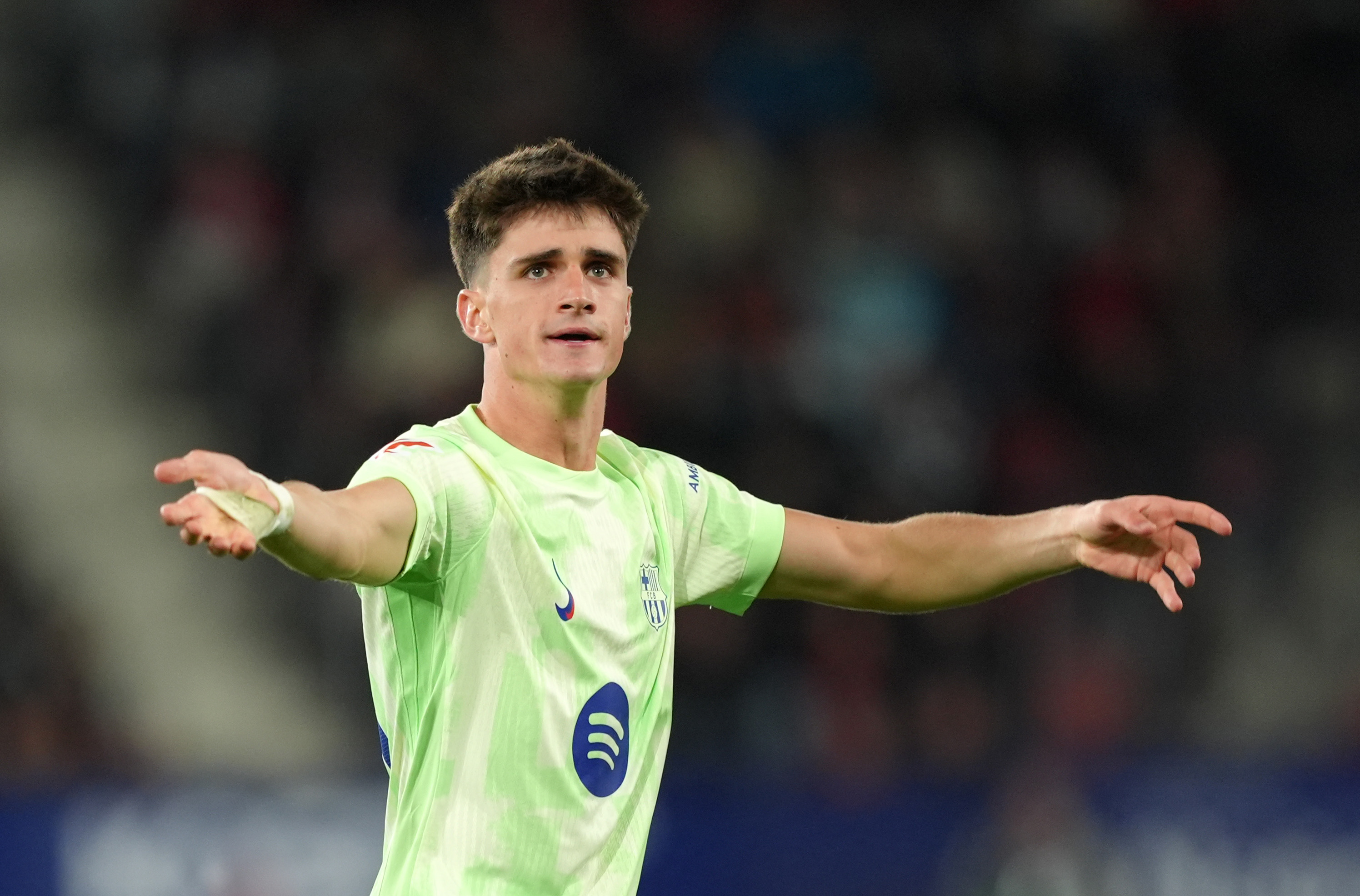The Dynamic Game
Hansi Flick’s explosive start to the season with FC Barcelona has created a significant shake-up in La Liga’s perception of football. Europe’s leading goalscorers have attacked all styles of Spanish teams with waves upon waves of direct, swift attacks, suffocating them by gathering momentum and pounding in goals to will. Cracking the Flick code involves solving a fresh kind of challenge for the league; a very stereotypically German high tempo, high-scoring game is guaranteed; with little time on the ball and a relentless barrage of pressure incoming.
Johnny Cardoso vs Atletico Madrid a few weeks back might just be my favorite midfield performance of the season
— La Liga Systems (@janufooty) November 11, 2024
Leading La Liga with this brand of football effectively green-lights the work of a lot of tactically aggressive La Liga sides of late – the Athletic Clubs, the Gironas, the Rayos and the Celta Vigos. Symbolically, it represents a fast-incoming change of attitude that has been peeking over the horizon on the Iberian Peninsula; a tendency to stray away from scoreline equilibrium. The drive to ‘protect’ a drawn, or tightly leading scoreline is now at a direct tug of war with a new drive to ‘attack’ it. The former is the tendency towards equilibrium, while the latter is the tendency towards dynamism; and both attitudes, crucially, are defined in a relationship with the scoreline.
Equilibrium and Dynamism – Attitudes towards the Scoreline
This is what Pep Guardiola had to say about the challenge of facing Simone Inzaghi’s Inter before the 2023 Champions League Final.
“The most important thing in this type of game is to not think we are losing at 0-0, because we are not losing. And Italian teams at 0-0 think they are winning.”
What I wish to highlight is the emphasis he places on both team’s attitudes to the drawn scoreline. The most important thing for him in this game is for his City to think a certain way with regards to the 0-0 scoreline. Teams that seek equilibrium are not only looking for tight scorelines, they also draw strength, and accumulate momentum the more they stay in it. There is an admission of relative weakness within the equilibrium state from Pep, and a further admission that this very state is what his Italian counterparts will be drawing strength from. Both managers not only play to a tactic, but also to the scoreline.
-11 – Atlético de Madrid attempted three shots and conceded 14 shots in the first 45 minutes against Real Betis (-11); in no other first half of a LaLiga match have they had a worse ratio of shots attempted to shots conceded since at least 2003/04. Neutralised. pic.twitter.com/03e04jwKlz
— OptaJose (@OptaJose) October 27, 2024
We can thus define teams that seek equilibrium as having an attitude which seeks to maintain or protect tight scorelines. The emphasis is on reducing variances in overall tactics, reducing the game to predictable and controllable low-energy match-ups. On the other hand, dynamic sides derive strength from continually increasing the energy of a match by showing an intent to supplant goals with even more goals. The predominant attitude is to increase the magnitude of attack in rough amounts across match time, adding chunks of positive momentum endlessly, if possible. Both attitudes are strongly and inseparably tied to the drive towards either maintaining or stretching the scope of the scoreline.
Let’s plunge into analyses of two recent La Liga fixtures purely through the lenses of dynamism and equilibrium to understand them further. First, a deep dive of Manuel Pellegrini’s dynamic blitz through Diego Simeone’s defences in the last week of October.
Dynamism vs Equilibrium (Real Betis 1 – 0 Atletico Madrid)
“It was not only the best first half of the season, but also the best game I have seen from the team since I arrived” – said Manuel Pellegrini after the 1-0 home win.
High praise from an experienced manager who has been at the club since 2020 and deserved praise too, for Betis were stunning on the night, embodying a strong showing with a dynamic attitude. Matching Atletico’s 4-4-2 on paper, the pivot of Johnny Cardoso and Sergi Altimira rotated the ball quickly with ease, threading passes through to wide spaces, often catching Atletico’s block narrow and out of shape.
How is game state affecting possession % in LaLiga?
📌 Barcelona dominate the ball just as much when ahead
📌 Girona & Real Sociedad take initiative when level; more reactive when they're up
📌 Alavés, Valencia, Leganés, Espanyol go into full bunker mode when leading pic.twitter.com/vgcfW1z2Uj— La Pausa (@lapausa_pod) November 12, 2024
An imposing front line of 4 with Vitor Roque, Chimy Avila, Ez Abde, and Pablo Fornals stayed high and wide and looked to combine with each other in quick bursts to puncture spaces all around Atletico’s defences. They also led a spirited, aggressive counterpress to ensure Atletico never got too comfortable with the ball. It was the maintained high levels of excitation that Simeone was not able to match tactically, or otherwise.
Unable to cope with the highly dynamic pre-conditions prepared by Pellegrini, the sort of slow equilibrium that Atletico conventionally thrive in never appeared. Nonetheless the question remains, how much does energy does it “cost” to match the excitation levels produced by newly dynamic teams? How can a side hope to maintain any sort of equilibrium when Real Betis, or worse, Barcelona come knocking with promises of an intense, high tempo fixture?
Imanol Alguacil would be the man to ask right now.
Overcoming Dynamism (1 Real Sociedad – 0 FC Barcelona)
Real Sociedad manager Alguacil described the effort put in by his side as “brutal” in order to carry out the 1-0 heist over Barcelona on the 11th of November. Their task was no joke. Barcelona are not only the highest scoring side in Europe, but arrived into this tie with lots of momentum, amassing 24 goals in the 6 games before. Imanol was able to win because of preparation; he was able to predict, duly raise, and then direct an aggressive defensive effort to match the repeated waves of pressure from Hansi Flick’s outfit.
Imanol’s goal in preparation was equilibrium, but having already calculated beforehand that a ridiculous amount of energy and intensity has to be spent to achieve it. The most crucial part was keeping the scoreline quiet, for Barcelona under Flick capitalises on momentum exponentially; they are near impossible to stop once the goals get going as Bayern Munich and Real Madrid recently found out.
This Barcelona fan in the middle of Real Sociedad celebrations… 🤣🇪🇸 pic.twitter.com/FPPR8ZDrXT
— EuroFoot (@eurofootcom) November 12, 2024
Eventually though, the dynamic nature of the game at the Anoeta began to collapse on itself as the game went by. The machine started to stumble and err as it found its way forward. By the end, 70% of possession was maintained by Barcelona but only to create less than 1xG, and no shots on target or goals at the end of the day; an anomalous set of statistics for Flick’s Barcelona. Alguacil gambled for equilibrium by playing with higher stakes than Diego Simeone against Pellegrini, earning the right to call the shots on the day, and saw through a plucky 1-0 win for his side. But crucially, by the end, Flick’s Barcelona were just as fraught in the whirlpool of their own approach, just like Simeone was in his, in the earlier fixture.
A Note on Intangibles
An intangible concept by definition is hard to identify, harder to track a second time, and still more difficult to discuss on equal footing with statistical tables and paraphrase summaries of the game. The football match is fundamentally unpredictable, but it is also a living, breathing entity beyond dots on a board and numbers on a page. Thus, the goal when looking at dynamic and static attitudes is not to see which “wins” among the two, reducing it to another tool towards making an empirical conclusion; but to casually highlight what kind of real-life game scenarios these attitudes respectively end up producing.
A lot goes into maintaining scoreline equilibrium, and a lot goes into the project of annihilating it. And there’s no better time to track the change than now, when the conflict between the styles is still in the balance.




